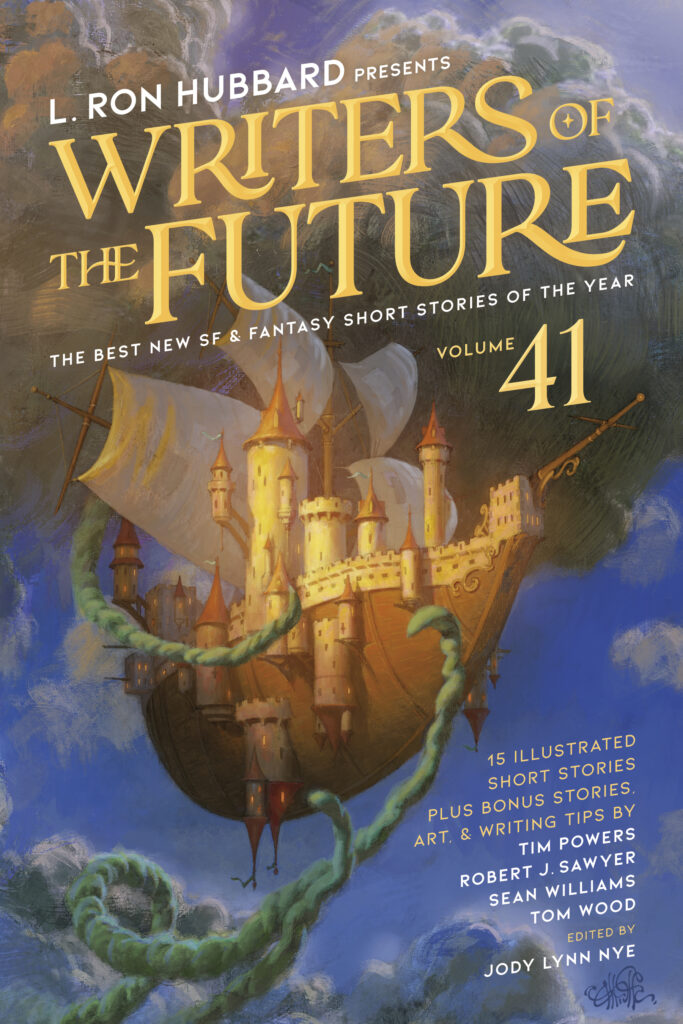I hit “submit” this month on my 100th story submission. I love easy, round numbers, so 100 submissions feels like quite a milestone. And, when pulling this blog post together, I realised it is just over 10 years since my very first submission back in June 2015. This feels like a very appropriate time to stop and assess how I’m getting on in my journey as a writer.
TLDR
Overall, while I have not sold as many stories as I would have wanted, I have achieved more in other ways than I thought possible and I am very happy with the direction my writing career is headed.
I am enjoying my writing more than ever, I feel I am improving steadily, and I am determined to keep on submitting. I am putting my work out there at a greater rate than ever before, which is something I am proud of.
The headline figures
There’s lots of ways to judge success, but I’ll start with perhaps the most objective: raw data.
In the table below I’ve broken those 100 submissions into a year by year tally against the number of stories I had published.
| Year | Stories submitted | Stories published |
|---|---|---|
| 2015 | 1 | 0 |
| 2016 | 5 | 0 |
| 2017 | 0 | 0 |
| 2018 | 0 | 0 |
| 2019 | 6 | 0 |
| 2020 | 12 | 0 |
| 2021 | 10 | 2 |
| 2022 | 9 | 1 |
| 2023 | 13 | 0 |
| 2024 | 24 | 1 |
| 2025 | 20 | 2 |
| Total | 100 | 6 |
100 submissions in 10 years and 6 published stories, which gives me a success rate of 6% (pending acceptance on 1 story still out on submission).
The thing with raw data is that, alone, it only tells part of the story. It does not tell me whether 6% is a high or low success rate compared with other writers. Nor does it tell me whether there is a weighting to each publication so that, for example, I would rather be published once in anthology X versus five times in magazine Y or if it is harder to get published in magazine Z. The data needs some analysis.
How many stories have I actually written?
While I have submitted 100 times, that does not mean I have written 100 stories. I sat down and counted them off, and I have written 21 individual science fiction or fantasy short stories, of which I have sold 6.
On that basis, I have sold just shy of 30% of the science fiction or fantasy stories I have written, which is a much better return. That number could increase if I sell that 1 story currently out on submission.
How many words have I sold?
As a short story writer, we are often paid by the word. So, a marker for how you are doing is to look at how many words you have sold; how long are the stories I have sold?
My first three stories, those sold in 2021 and 2022, totalled 2,438 words (920, 980 and 538). They were all flash fiction stories (stories less than a 1,000 words).
However, my last three stories, those sold in 2024 and 2025, have totalled 21,987 words (5,221, 15,109 and 1,657), which is a huge increase—around nine times the amount of words.
I’ve been writing more and more short stories (not flash) as I want to develop my skill in telling stories over a longer form until eventually I am confident and comfortable writing at novel length. The fact I have started selling stories at a longer length is a big boost to my confidence.



Submission mission
My first ever story submission was to Analog on 1 June 2015, which garnered my one and only “personal rejection” from them (they “kind of liked my style”). I had no idea at the time that such a rejection was in fact positive. It didn’t encourage me to continue writing as, in hindsight, it should have.
Those were the days when I was working long hours as a private practice lawyer and typing up stories on the train as I commuted to and from work. My wife had bought me a compact laptop for this reason to encourage me to write. I had long told her my dream was to be a writer but I was doing precious little to achieve that. In fact, that was my only submission in 2015 and in the five year period before my daughter was born, I only submitted 12 times.
I have written before about the profound impact becoming a father had on me, including giving me a fire to go out and chase my dream of being a writer. To back that up with some statistics:
- 2015 – 2019 BC (before children): 12 submissions
- 2020 – 2025 AD (after daddy): 88 submissions
In that second five year period, I have also won the Writers of the Future contest. That has given me even more motivation and belief that I can make it as a writer, which has spurred me on to keep writing and to submit more frequently—how else will my stories get read?
I was announced as a winner in September 2024 and, since then, I have submitted 25 stories, which is 150% of my average submission count and greater than any single calendar year to date.
One of the lessons from the Writers of the Future workshops was perseverance. Time and again, leading authors told us of the importance of persevering and to just keep at it. The greater number of times you submit (in theory), the greater chance you have of being published. After all, you can’t expect stories sitting on your computer to suddenly end up in a magazine, right?
If I analyse my submission history through that lens, then I am happy with my results because they show I am submitting more and more each year, thus improving my chances of having more stories published.
Where am I submitting my stories?
It’s also worth considering the type of markets I have submitted my stories to. In the writing industry there are different tiers to publications which can be distinguished based on a number of actors, but perhaps first and foremost is pay rate. “Pro markets” are those that pay the Science Fiction & Fantasy Writers Association (SFWA) pay rate of 8c per word. Then there are the semi-pro markets that may pay anywhere from 7c a word to $1 a story. There are also markets that don’t pay at all but that doesn’t mean they publish everything they receive–they can still reject you!
You have probably (correctly) guessed that the higher the pay, the higher number of submissions, and the tougher it is to get published. With the high paying markets you are also competing against big names who have won numerous awards and so on. It’s the creme de la creme. I have heard that the acceptance rate of these heavyweight pro markets is less than 1% of the total submissions they receive. So, yeah, pretty tough to get in.
Notwithstanding that, I always submit my stories to my dream markets first, which includes (but is not limited to) the likes of Clarkesworld, Asimovs and Writers of the Future. I totted up my submissions to pro markets and they total 48. So nearly half of my submissions were to the hardest to get into publications.
Out of the 6 stories I sold, 2 were to pro markets paying 8c a word (Daily Science Fiction (RIP) and Writers of the Future). I’m proud of those sales but I’m proud of all my sales. The feeling I get when I opened those emails which said my story had been accepted is hard to describe and hard to beat. It’s such a joyous moment. The fulfilment and happiness I have gotten from selling my 6 stories has more than made up for the disappointment from those 93 rejections (I’m not that bad at maths, I still have 1 story out on submission, remember).
Talking of sales, my total career sales to pro markets made me eligible to become a member of SFWA, which in itself is a goal for many aspiring writers due to the publication entry requirements.
What’s my aim again?
I’ve written before that, around 2023, I set myself a goal of winning the Writers of the Future contest. From that point, I wrote stories aimed at that market. It’s worth noting that some stories are just not good fits for all markets – you won’t sell a zombie story to Clarkesworld and a whimsical fairy tale retelling probably won’t get bought by Analog, yet both may find the right home elsewhere. So it is that some styles of stories do well in WOTF (you probably won’t win if you submit expletive laden, gruesome horror, and perhaps even unconventional story structure may fare less well).
After 12 submissions, I achieved that goal. I am now a winner of the Writers of the Future contest and, along with it, I had a story published in an Amazon bestselling anthology. I’ve had a free trip out to Hollywood for a week long writing masterclass with legends of SFF, attended a red-carpet awards gala and met my WOTF41 cohort who are the best bunch of people I could have hoped to meet and experience it with.
What has this data deep dive taught me?
Statistics alone don’t determine your success. You need to interpret that raw submissions data through the lens of your aspirations and circumstances and, ultimately, you are the only person qualified to judge your success. You alone know what success looks like to you. And, above all, if you enjoy writing, just write and don’t worry about it. I’ve never found joy in comparing how I am doing with how (I think) other people are doing. That path leads to misery. Be you, do you, be happy.
And here’s to the next 100 submissions!
